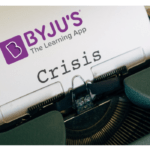Recently, Café Coffee Day partnered with a delivery partner to offer delivery services to its customers. As it was a new service the Company was diving into, there was an immediate need to acquire new talent and of course equip them with skills that can be leveraged by the Company in the implementation of its new plans and impending changes. This is when Café Coffee Day used the programmatic learning approach, wherein a whole new team was set up and trained in certain skills to kick-start the new business.
What is programmatic learning?
In programmatic learning, the objective is to address the complex business problems of the organisation. It requires collaborative learning, where learners interact with each other amidst a continuous feedback system. Unlike conventional learning, programmatic learning does not fulfil the in-time learning needs of the organisation, with a focus on acquiring small skills. It focuses on building greater knowledge and new skills over a period of a few months, rather than just hours or days. Programmatic learning supports a continuous learning mechanism in the organisation, and is not just a one-time activity.
“The use of programmatic learning approach is not only restricted to design learning programmes for the senior leadership. Even the most junior employees can be trained using such an approach. We train our newly-recruited graduates with the same approach, where they are tuned to the entire line of the business and the culture.”
Dileepan Moorkanat, head of learning, HPE India
What are the characteristics of programmatic learning?
The major features of programmatic learning are that it:
1. Is a continuous and action-based activity
2. Supports ongoing learning rather than one-off events
3. Harnesses a range of content types
4. Is ideally suited to deliver complex goals, and yet feels easy to engage with as a learner
5. Focuses on outcomes, performance and results
When to use programmatic learning?
As per Dileepan Moorkanat, head of learning, HPE India, the programmatic approach is majorly used to solve the most complex business problems of the Company. It is highly recommended and designed for people who are in line for a promotion to higher roles or those who are moving vertically.
Moorkanat reveals that, at HPE India, the programmatic learning approach is adopted in the form of learning interventions. “The elements of programmatic learning are very much visible in the training and development of senior management executives at HPE,” shares Moorkanat.
“In the current times, during the COVID situation, multiple brands have collaborated with each other to offer better services to their customers. In such cases, companies have used the programmatic learning approach to achieve organisational goals and to skill people, equipping them with new skills over a period of few months, with regular feedback and collaboration.”
Divaker Pulkuri, head of learning and capability development, Cafe Coffee Day
However, he also clarifies that the use of programmatic learning approach is not only restricted to design learning programmes for the senior leadership. Even the most junior employees can be trained using such an approach. “We train our newly-recruited graduates with the same approach, where they are tuned to the entire line of the business and the culture,” mentions Moorkanat.
According to Divaker Pulkuri, head of learning and capability development, Cafe Coffee Day, such learning approaches are often used when an organisation launches a new line of product or a service.
He cites that in the current times, during the COVID situation, multiple brands have collaborated with each other to offer better services to their customers. In such cases, companies have used the programmatic learning approach to achieve organisational goals and to skill people, equipping them with new skills over a period of few months, with regular feedback and collaboration.
Pulkuri shares that for diversification one needs to follow a systematic learning approach to solve the business challenges of the new venture, by training and skilling employees for it. In such cases, it takes two to three months to develop new teams, which are capable enough to run the business.
“We add projects at the end of every learning programme, which are designed on the basis of inputs from the HODs and require people to deal with the real-time challenges the company is facing at that moment and provide solutions.”
Nitin Thakur, head of learning, Jindal Stainless
“Programmatic learning has been in existence for a long time in all kinds of businesses, but now the terminology has changed. Earlier, we called it change management. When there is a need to develop multiple skills in employees to deliver a new kind of service or a product to the customers, businesses have to follow a programmatic learning approach to fulfil the organisational goals,” explains Pulkuri.
How to use programmatic learning?
Nitin Thakur, head of learning, Jindal Stainless, reveals that in his organisation, they ask the HODs to list out the kind of problems they are facing in their respective departments, in terms of learning. They then try to meet the organisational objectives using a programmatic learning approach.
“We add projects at the end of every learning programme, which are designed on the basis of inputs from the HODs and require people to deal with the real-time challenges the company is facing at that moment and provide solutions,” shares Thakur.
Artificial intelligence and machine learning can also enable the use of programmatic learning in organisations. “As per the requirement of the business, tools such as AI, ML and robotics also play an important role in reaching out to a larger audience or people,” opines Pulkuri.
“These days, there are AI-enabled learning experiences (LXPs) which can help 360-degree access of a person, present a 360-degree learning path for an individual, and based on the level of improvement observed, set a new priority so that there is continuous learning happening,” adds Thakur.
In these times, with limited face-to-face interaction, how can we use the programmatic learning approach?
Thakur shares an example of an innovation exchange programme organised by him, where people from all departments were asked to submit a problem and a suitable solution for the same. All these activities were organised virtually. This, Thakur says is an example of internal crowd sourcing. Sharing inter-industrial ideas may also help, where people can be encouraged to share ideas or learnings from different industries.
Clearly, to achieve greater organisational goals and solve bigger issues, programmatic learning is the right approach to adopt.
Value our content... contribute towards our growth. Even a small contribution a month would be of great help for us.
Since eight years, we have been serving the industry through daily news and stories. Our content is free for all and we plan to keep it that way.
Support HRKatha. Pay Here (All it takes is a minute)



























